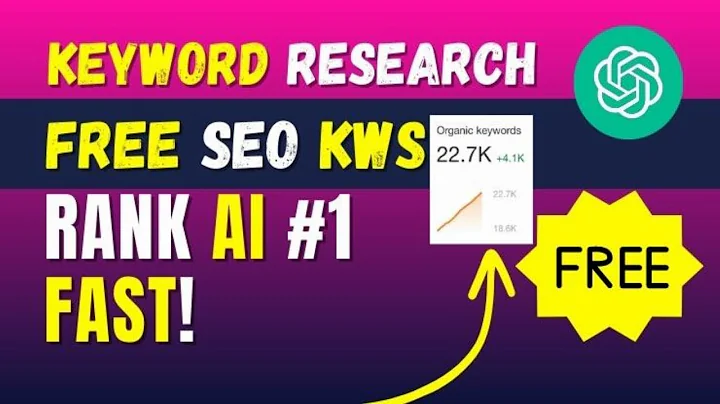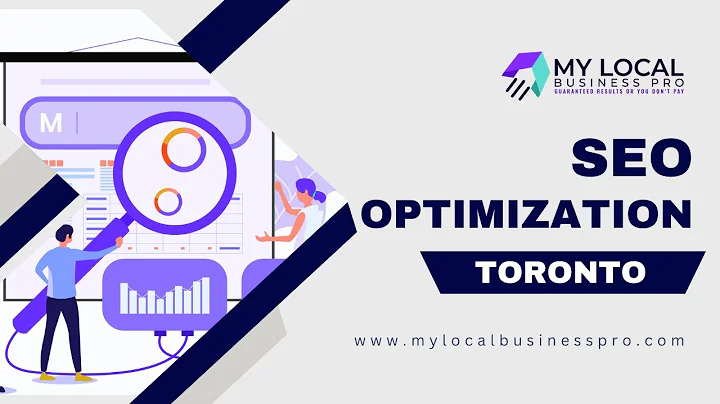Unlock the Power of ASO Using SEO Techniques
Table of Contents
- Introduction to ASO and SEO
- Understanding App Titles and Keywords
- Utilizing Subtitles and Short Descriptions
- Expanding on Content with Long Descriptions
- The Importance of Ratings and Reviews
- Comparing Backlinks and Ratings
- Cross-Promotion for Increased Downloads
- The Power of Email Newsletters
- Leveraging ASO Tools for Success
- Conclusion
💡 Introduction to ASO and SEO
In the ever-expanding world of app optimization, understanding the nuances of App Store Optimization (ASO) can be overwhelming, especially if you come from a background in Search Engine Optimization (SEO). While the two fields share similarities, there are distinct differences when it comes to optimizing apps for search visibility. In this article, we will break down ASO into SEO terms, providing a clear understanding of how to effectively optimize your apps for search and drive organic downloads. So, let's dive in!
💡 Understanding App Titles and Keywords
One of the primary factors in both ASO and SEO is the importance of keywords. In SEO, we are accustomed to including relevant keywords in the title and domain name of a website. Similarly, in ASO, the app name holds great significance. However, unlike SEO where the domain name is placed on the right, in the app store, the app name itself serves as the title. To optimize your app for search, it is crucial to include high-traffic, relevant keywords in the app name. For example, if your app is in the meditation space, consider placing a keyword like "Meditation - Calm" as the app name. This ensures that the targeted keyword is prioritized for better rankings and organic downloads.
💡 Utilizing Subtitles and Short Descriptions
In SEO, we utilize H1 tags to emphasize keywords and boost search rankings. In ASO, the equivalent of H1 tags can be seen in subtitles and short descriptions. On iOS, subtitles are used, while on Google Play, it is the short description that plays a similar role. Here, it is beneficial to repeat certain keywords from the app name and expand upon relevant phrases. For example, if your app name includes the keyword "meditation," you can add "guided meditation" in the subtitle/short description. By doing so, you are reinforcing the keyword and providing more context to users and search algorithms. On Google Play, where there is more space available, it is wise to repeat keywords and focus on lower competition ones for better ranking opportunities.
💡 Expanding on Content with Long Descriptions
Content optimization is a crucial aspect of both SEO and ASO. On the web, we expand on titles and H1 tags to provide comprehensive information and target specific long-tail phrases. Similarly, in ASO, we have the long description to achieve the same goal. However, it is important to note that repetition is not required in the long description. Instead, focus on expanding on the keywords used in the app name and subtitle/short description. For example, if your app targets keywords like "meditation" and "relaxation," consider elaborating on these in the long description. Additionally, explore lower competition keywords to maintain a balance between traffic and competition.
💡 The Importance of Ratings and Reviews
In SEO, backlinks play a significant role in determining the authority and relevance of a website. Similarly, in ASO, ratings and reviews contribute to the overall ranking and visibility of an app. While Google Play does consider backlinks, the primary focus should be on generating positive ratings and reviews. By consistently asking users for feedback and encouraging them to leave reviews, you can improve your app's rankings for targeted keywords. Remember, ratings and reviews are crucial for ASO success and should be a top priority.
💡 Comparing Backlinks and Ratings
While backlinks are integral to SEO, they are not the primary focus in ASO. Instead, ratings and reviews hold the key to app visibility. While backlinks can enhance your Google Play listing, the impact is often not as prominent as ratings and reviews. Therefore, prioritize obtaining positive reviews from your users as they are more likely to boost your app's ranking for targeted keywords. By implementing effective ASO strategies, such as including relevant keywords in the app name and subtitle, and generating positive ratings and reviews, you can increase your app's visibility in the competitive app market.
💡 Cross-Promotion for Increased Downloads
Cross-linking is a common SEO practice that aims to keep users engaged and on the website for longer periods. In ASO, cross-promotion serves a similar purpose. If you have an app portfolio, leverage successful apps to promote other apps within the portfolio. If a user enjoys one of your apps, they are likely to be interested in others. Additionally, don't limit cross-promotion to the app store alone. Explore opportunities to promote web services, such as Shopify sites, through your apps. Furthermore, email newsletters can also be highly effective in driving app engagement and cross-promoting related services. By maximizing cross-promotion efforts, you can increase app downloads and enhance overall user engagement.
💡 The Power of Email Newsletters
Email newsletters are a powerful tool in both ASO and SEO. While we often emphasize capturing email addresses in SEO to engage with website visitors, the same approach should be applied to app marketing. Email newsletters provide an additional channel for communication and re-engagement with users. By regularly communicating with users via email, you can bring them back into your app, encourage conversions, and increase user retention. Furthermore, email addresses can be utilized for retargeting and look-alike campaigns, allowing you to target your most engaged users effectively.
💡 Leveraging ASO Tools for Success
To achieve optimal ASO results, it is essential to utilize the right tools. Various ASO tools assist in app keyword research, competitor analysis, and performance tracking. These tools can guide your optimization efforts by providing insights into high-traffic, low-competition keywords and monitoring the effectiveness of your ASO strategies. By leveraging these tools, you can stay ahead of the competition, optimize your app for maximum visibility, and drive organic downloads.
💡 Conclusion
ASO and SEO share common principles but require distinct approaches. By understanding the parallels between the two, you can effectively optimize your apps for search visibility and drive organic downloads. Remember to prioritize relevant keywords in the app name, subtitle/short description, and long description. Focus on generating positive ratings and reviews, cross-promote within your app portfolio, and utilize the power of email newsletters. Lastly, leverage ASO tools to stay ahead of the competition and improve your app's visibility and performance in the app store. With the right strategies and consistent effort, you can achieve ASO success and drive growth for your apps.
Highlights:
- ASO (App Store Optimization) and SEO (Search Engine Optimization) share similarities but require distinct approaches
- Keywords play a crucial role in both ASO and SEO optimization
- Utilize subtitles and short descriptions to expand on app titles and reinforce relevant keywords
- Long descriptions provide an opportunity to elaborate on app features and target long-tail phrases
- Ratings and reviews are vital for ASO success over backlinks, with positive feedback boosting app rankings
- Cross-promotion helps drive increased downloads by leveraging successful apps within your portfolio
- Email newsletters serve as a powerful tool for communication, re-engagement, and cross-promotion
- Implementing effective ASO tools can provide valuable insights and optimize app performance
- With proper ASO strategies and consistent effort, you can achieve organic growth and maximize app visibility
- ASO and SEO require continuous optimization and adaptation to stay competitive in the app market
FAQ
Q: Can I use the same keywords in the app name and subtitle/short description?
A: Yes, it is beneficial to repeat certain keywords in these sections to reinforce their relevance and improve rankings.
Q: Is backlinking as important in ASO as it is in SEO?
A: While Google Play does consider backlinks, the primary focus in ASO should be on generating positive ratings and reviews.
Q: How can I cross-promote my apps effectively?
A: Use successful apps within your portfolio to promote other related apps. Additionally, consider cross-promotion with web services and utilize email newsletters for outreach.
Q: Which ASO tools are recommended for app optimization?
A: There are several effective ASO tools available, including App Annie, Sensor Tower, and Mobile Action, which can provide valuable insights and help optimize your app's performance.
Q: How often should I ask users for ratings and reviews?
A: It is recommended to regularly prompt users for ratings and reviews, ensuring consistency but without overwhelming them.
Q: Can email newsletters be used for retargeting campaigns?
A: Yes, email addresses collected from newsletters can be leveraged for retargeting and look-alike campaigns, allowing you to effectively target engaged users.
Q: Do ASO strategies require continuous optimization?
A: Yes, both ASO and SEO require ongoing optimization and adaptation to stay competitive and maximize app visibility in the ever-evolving app market.
Resources:







